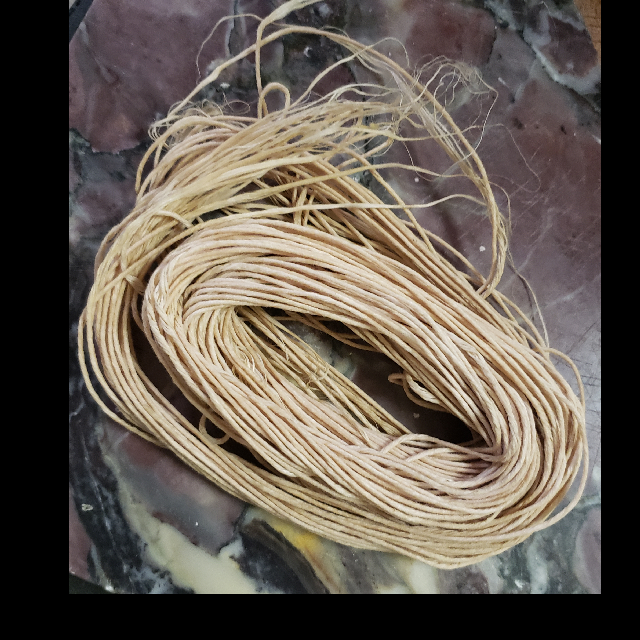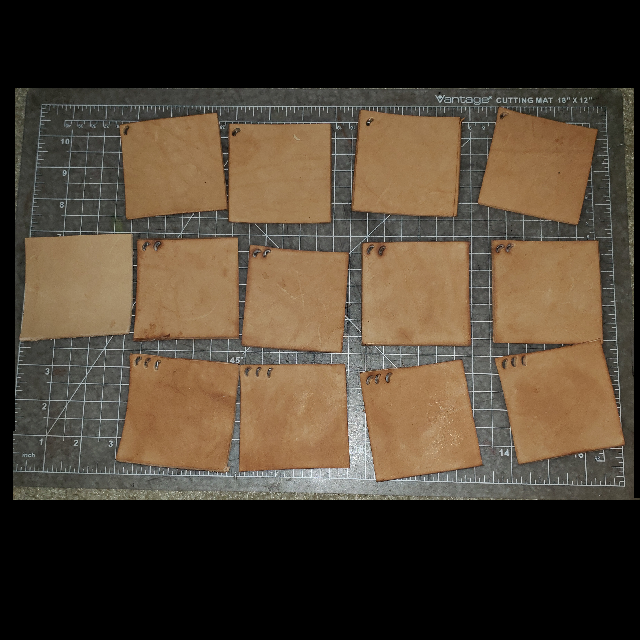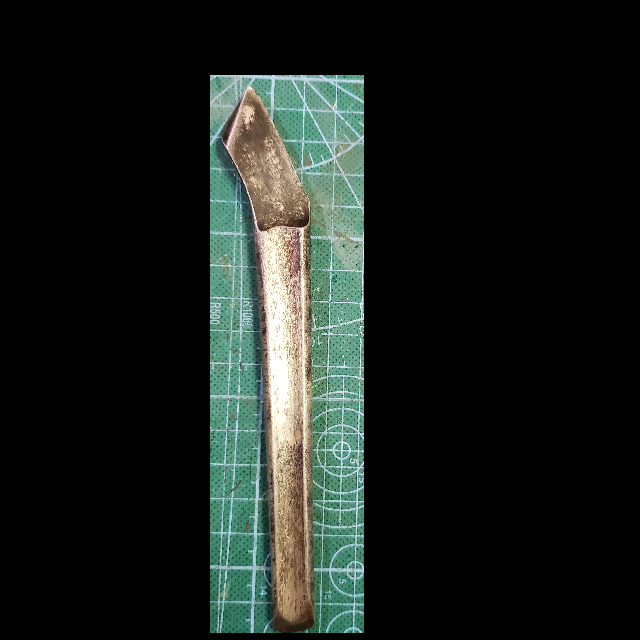-
Posts
1,283 -
Joined
Content Type
Profiles
Forums
Events
Blogs
Gallery
Everything posted by SUP
-

Small metal folding tabs for open end watch straps
SUP replied to SteveOz's topic in Leatherwork Conversation
The ones you have shown @SteveOz are the same items as those suggested by others here. The manufacturer might be different. . You could check different sellers until you get the exact shape and size that you need. You know what it is called, so that will help. Most leather stores have them in some form. -

Question on dyeing.
SUP replied to Tophee's topic in Dyes, Antiques, Stains, Glues, Waxes, Finishes and Conditioners.
About stamping, you could spray water just sufficiently to penetrate no more than half way through the layer being stamped. Just look at the edges to get an idea. The back should remain dry. It works for me. For a spray bottle, I find that the delayed sprayer that Tandy sells is really useful. It gives more control. When dyeing, this is what I do. It might help. Stamped or not, I let the leather dry completely, A thin layer of Neatsfoot oil. I let that dry completely for a few hours at least. Apply a diluted dye. Dry. Buff lightly to remove surface dye. Repeat dyeing step if darker color needed. Buff. A resist like Pro-resist. A resist prevents further dyeing of the leather. So I try to keep it out of the stamped areas. Dry. Finally, the antiquing paste, rubbed into the stamped sections and then wiped off to remove it completely from the rest of the leather but left in place in the stamped depressions. Dry. Buff, and then apply a finish like Satin Shene. You can try to do a reverse if you have a light hand, if you want a really dark background. This is where the stamped sections remain undyed or light and the rest of the leather is dyed darker. This is tricky to do though. There are threads for both techniques on this forum, from people who are much more experienced, who can give much more valuable insight. For your darker dye, you could contrast with light thread - beautiful stitching can be as decorative as stamps. -

Question on dyeing.
SUP replied to Tophee's topic in Dyes, Antiques, Stains, Glues, Waxes, Finishes and Conditioners.
You need to do antiquing. That is where you dye the leather one color, apply a resist and then apply an antiquing paste, which is essentially a darker dye. You rub in the antiquing dye so that it gets into the stamped parts and shows it up clearly.. Search for 'antiquing' on this forum. you will find plenty of threads providing specific instructions. If you don't want to go down that route, you can just apply neatsfoot oil or coconut oil (both lightly) and keep the leather pieces in the sun. That darkens the leather beautifully and the stamped patterns might be clear as well. -

Excellent eBay seller! (what type of thread is this?)
SUP replied to SUP's topic in Leatherwork Conversation
Yep. Knowledge is never wasted - I told my professor that once when I was a student when he found me reading a completely different subject. Made an enemy that day. LOL Incidentally that is not 'my' experiment. Others play as much a part, from @fredk , who is also conducting the experiment, @chuck123wapati who had started as well to those who give their input from their knowledge. Any input from you is welcome too. -

Excellent eBay seller! (what type of thread is this?)
SUP replied to SUP's topic in Leatherwork Conversation
LOL. That's me! Always disappearing down rabbit holes - the older the better. That's the fun of it! New ones too though. Check my experiment on the effects of different oils on leather. -

Excellent eBay seller! (what type of thread is this?)
SUP replied to SUP's topic in Leatherwork Conversation
E-string. I will remember that. I think I will just try to learn this technique on some thick leather that I have. I don't need to make footwear for that. It is nice to think that I am learning techniques that have been done for centuries. A lot of leatherwork is of course as old as well. New tools and techniques are easy to purchase and use and convenient too. But it is things like this that make leatherwork so much more fascinating, for me. -

Excellent eBay seller! (what type of thread is this?)
SUP replied to SUP's topic in Leatherwork Conversation
Thank you. @Aven. I learn such unexpected things on this forum, it's wonderful! I've been looking up boar bristles, to see if they are available. Not that I am anywhere close to even thinking of making shoes but its good to know. Found one seller on Etsy and one on eBay. There should be more since boar bristles are used for other things as well. -

Excellent eBay seller! (what type of thread is this?)
SUP replied to SUP's topic in Leatherwork Conversation
Thank you @Aven I'll look at the video. Thank you, @DJole and @Dwight for your guidance as well. -

Excellent eBay seller! (what type of thread is this?)
SUP replied to SUP's topic in Leatherwork Conversation
@Aven Is that used these days? Boar's bristles as needles? -

Excellent eBay seller! (what type of thread is this?)
SUP replied to SUP's topic in Leatherwork Conversation
@Aven, Yes, I believe so. -

Excellent eBay seller! (what type of thread is this?)
SUP replied to SUP's topic in Leatherwork Conversation
It burns when I put a lighter to it. Burns down the length of the piece that I cut. No. That is wrong. I think it melts and leaves a small amount of firm black residue which would not happen with natural fibre. Natural fibre would leave ash. This thread burns up so fast, initially I thought it burnt up but now when I look, it has left a firm black residue. So synthetic fibre. -

Excellent eBay seller! (what type of thread is this?)
SUP replied to SUP's topic in Leatherwork Conversation
It is about 1.2 - 1.3mm thick. I did take the photograph from up close so that it is clearly seen. Incidentally, the seller did not know what this thread is either. -

Excellent eBay seller! (what type of thread is this?)
SUP posted a topic in Leatherwork Conversation
I have had an excellent experience with an eBay seller in the last couple of days and thought I should put it up here since these days, more and more of us have reasons to mistrust eBay sellers. I bid on a set of about 40 pre-1963 Craftool stamps. The lot included a rawhide mallet in good condition and thread (I have put up the pic here..what type is it?) I won the auction and paid a total of $68 including taxes and shipping, which I thought was fair. The seller, however, did not expect the lot to go for so much and was delighted. As a thank you, he included 2 pieces of leather with the lot. I received the lot last evening and on cleaning, realized that the stamps are all in excellent condition - only light surface rust that disappeared with Evaporust. The mallet is also in good condition, needing only a light cleaning. The leather included seems to be deerskin. A good experience, which put me in a good mood for the weekend and completely wiped away the bad taste left by a crooked seller from France from whom I luckily did not purchase anything. I would love to know what this thread is - it was part of the lot that I received. -
That's good information. I will use Vaseline on several pieces and check the extent of water absorption over hours and days. Right now, I have applied a mixture of mineral oil and coconut oil (10%) to new leather pieces and kept them with the others. I will prepare a new set for the Vaseline. I need to also record the thickness of the leather very specifically for each piece too, not just a generalized 5oz description. Today, it is bright and sunny outside. Hope it rains soon.
-
Sorry to hear about your eye problems. Glad you are getting it done and they can be straightened out. And your NHS. What a blessing that is. Wish we had something similar here.
-
I am thinking of a way to include petroleum jelly ever since your experience that it might be giving a water repellent effect.. That will be a different experiment, more to check how long the water repellent effect remains when out in the rain - its been raining here quite a bit - and then, when kept in different places, how long the effect remains. Have you had any experience with this?
-
Here are the pics and information about Lanolin, Tallow and cod liver oil. - the first row is treated with lanolin, the 2nd, with tallow and third with cod liver oil. The piece on the extreme left is untreated, for comparison. Lanolin, tallow, cod liver oil - applied to 4 pieces each, one piece being placed in garage, outside, car and control area. Observations as follows: Lanolin: Immediately on application, leather pieces slightly darker than control – all remarkably consistently darkened. Smoother as well. Mild smell of lanolin. Tallow: Immediately on application, leather pieces slightly darker than control. Smooth. No smell of tallow. Cod liver oil: Immediately on application, leather pieces slightly darker than control. Smooth. Smell of cod liver oil. All pieces have darkened slightly after application of test material – more or less to a similar extent. The lanolin gave the most consistent immediate darkening with the least streaking or spots. The pieces treated with tallow have no smell while those treated with lanolin and cod liver oil smell of those respective products. All the pieces feel smooth - smoother than the control. They are as soft as well but not softer than the control. I completed this a while ago; now preparing the set with the mix of mineral oil and coconut oil.
-
@fredk, will try that.
-
Thank you for that information @Littlef
-
That is in fact what I needed - which polish to look for. Now I have some idea -that polishes are categorized based on the hardness of the metal being polished. Never done anything with metal, so naturally I am absolutely clueless , but slowly learning, with the patient help from all you kind people. I don't plan to buff the faces of the stamps - they have to remain sharp. Not sure how I will protect them. Let's see. Thank you @Littlef, for your input.
-
@Littlef, I will buff the groover today. it appears to be iron, no idea what it is combined with though. It rusts very slowly, not the fast surface coating of rust that I see with other iron or steel items. Reminds me a bit of the Ashok Pillar - an iron with high Phosphorus content. Will metal polish be sufficient to protect it after cleaning? Do you have any recommendations for brand? I do not plan to buff the stamps. Just warm evaporust until clean. That has never failed as yet! After that, do I use polish on them as well? Or anything else? There is not much chrome left on those pieces, else they would not rust.
-
This old groover that I found is heavy, made of one piece of metal, which I think might be some form of Iron. I could not get it completely clean. It has some sort of black protective coat on it, it appears. When I apply oil and rub with a cloth, a brownish residue rubs off, which I presume is rust. I would like to apply a protective coating on it. I store all my knives with blade wax which works splendidly but not for tools of daily use. I read the threads on this forum and am confused abut what to use. Ballistol or Rain-X or Flitz or steel polish (so many out there!) or plastic spray or something else? I have not used any of these products so am unclear as to what would work here. I would also like to use the same on some old stamps that I found. They are rusty and I have to remove that rust first - Evaporust works there - thank you @bruce johnson for that tip! Any help is greatly appreciated.
-
@dikman yes and along with mineral oil, other petroleum based products appear as additional ingredients as well. About mineral oils, it is purely organic (versus inorganic) from the point of view of Chemistry. I think of it as natural as well - the result of refining of crude oil - sources of fossil fuels. I suspect people think it is not organic because of the name - they associate the term 'mineral' with, I suppose metals and nonmetals, essentially inorganic material. I wonder if there is another name for mineral oil.






